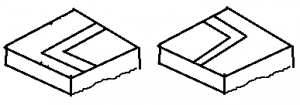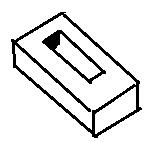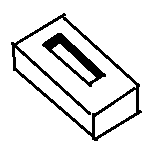This set of Casting, Forming and Welding Multiple Choice Questions & Answers (MCQs) focuses on “Making the Cores”.
1. Which of the following is not a core machine?
a) Jolt machine
b) Core blower
c) Sand slinger
d) Mill setter
View Answer
Explanation: Among the following, mill setter is not any type of a core machine, while the other three are few of the types of core machine.
2. Which cores are made manually in hand filled core boxes?
a) Small sized-mass production
b) Small sized-limited production
c) Large sized-mass production
d) Large sized-limited production
View Answer
Explanation: Small sized cores are made manually in the hand filled core boxes. For making large sized products for mass production, these cores cannot be employed.
3. Weak cores are reinforced using what?
a) Iron wires
b) Steel wires
c) Bronze wires
d) Cobalt wires
View Answer
Explanation: Weak cores need to be strengthened. And hence, for this purpose, reinforcement is provided, in the form of steel wires.
4. In shell core making, the core box is heated up to what temperature?
a) 400°F – 600°F
b) 500°F – 700°F
c) 600°F – 800°F
d) 800°F – 1000°F
View Answer
Explanation: A decent amount of temperature has to be attained for the operation of shell core making. In shell core making, the core box has to be heated to a temperature of almost 400°F – 600°F.
5. The following figure represents what?

a) Strickle core box
b) Gang core box
c) Left and right hand core boxes
d) Loose piece core box
View Answer
Explanation: The following figure represents two core boxes, in which one is facing to the right, while the other is facing is towards the left. Hence, it depicts left and right hand core boxes.
6. What does the following figure represent?

a) Half core box
b) Split core box
c) Gang core box
d) Loose piece core box
View Answer
Explanation: The following figure represents a half core box. This type of core box is mainly used for the production of cores which are cylindrical in shape.
7. Which core box is represented by the following figure?

a) Half core box
b) Dump core box
c) Split core box
d) Gang core box
View Answer
Explanation: The given figure represents a dump core box which is used for making rectangular or trapezoidal cores.
8. What does the following figure represent?

a) Sand slinger
b) Core extrusion machine
c) Pattern and core prints
d) Core blowing machine
View Answer
Explanation: The following figure represents pattern and core prints. These core prints make up core seats when they are put into the sand for making mold.
9. A sand slinger works at a high speed.
a) True
b) False
View Answer
Explanation: A sand slinger uses a high speed rotating impeller which is used for throwing sand in the core box.
10. Cylindrical cores are made using Dump core boxes.
a) True
b) False
View Answer
Explanation: Dump core boxes are helpful in making rectangular or square cores. Cylindrical cores are made using half core boxes.
Sanfoundry Global Education & Learning Series – Casting, Forming and Welding.
To practice all areas of Casting, Forming and Welding, here is complete set of 1000+ Multiple Choice Questions and Answers.
If you find a mistake in question / option / answer, kindly take a screenshot and email to [email protected]
- Check Mechanical Engineering Books
- Apply for Mechanical Engineering Internship
- Practice Metallurgical Engineering MCQs
- Check Metallurgical Engineering Books
- Practice Mechanical Engineering MCQs
